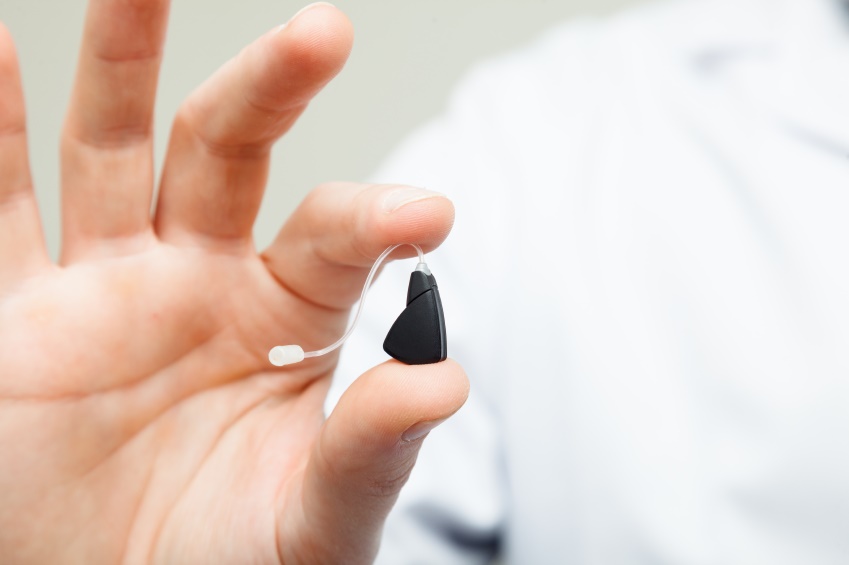
Hearing aid guides are not hard to find, but the majority are not exactly reader-friendly, either. Most are generally too lengthy or complex, creating more confusion instead of less.
My guess is that you’re much less interested in the physiology of hearing or in the ins and outs of acoustical engineering and more interested in obtaining the ideal technology at an acceptable price. Your goal is to hear better, not to read a 15-page manual.
If that represents you, then you’ll welcome this brief guide to hearing aids. We’ll cover four small parts, and when we’re finished, you’ll be set to work with your hearing care professional to find the technology that’s best for you. Let’s get started.
How All Digital Hearing Aids Work
Choosing a hearing aid can feel overwhelming—there are several brands and seemingly endless factors to consider. But it’s not as complex as it appears. As you move on through this guide, try to remember that all digital hearing aids work essentially the same way, and include these four basic parts:
- The microphone picks up external sound and transfers it to the digital processor.
- The digital processor modifies the sound signal based on the settings programmed by the hearing instrument specialist. The revised sound signal is then directed to the amplifier.
- The amplifier increases the volume of the sound according to the programmed settings, amplifying only the frequencies the client has trouble hearing (while suppressing background noise). This signal is then transmitted to the speaker.
- The speaker presents the magnified sound to the ear, producing louder, clearer sound.
Additionally, all hearing aids contain a battery, volume and setting switches, and remote controls.
Hearing aids really only differ in two important ways: 1) style, and 2) advanced features. We’ll address these in the next two sections.
Hearing Aid Styles
You have your choice of three principal styles:
1. Behind-the-ear (BTE) hearing aids hook over the top of the ear and sit behind the ear. The case is then attached to an earmold in the ear canal by a piece of clear tubing. BTE hearing aids are easy to handle and maintain, generally have an extended battery life, and can manage severe hearing loss.
2. In-the-ear (ITE) hearing aids occupy the outer part of the ear with a custom-molded shell. ITE hearing aids are smaller than the behind-the-ear hearing aids but bigger than the in-the-canal styles. This makes ITE hearing aids easier to handle than the smaller styles but less visible than the BTE style.
3. In-the-canal (ITC) hearing aids and completely-in-the-canal (CIC) hearing aids fit partly or completely within the ear canal, making them almost or completely invisible. ITC and CIC hearing aids are custom molded to the shapes of the ear, and some can be worn for months at a time.
When selecting a style, weigh the tradeoffs among user-friendliness, battery life, and concealment. Your hearing care professional will help you prioritize your preferences and determine the best suited style.
Hearing Aid Advanced Features and Accessories
Once you’ve selected the right style, you can decide on which of the following features you need—and which you don’t.
- Directional microphones allow you to concentrate on the sounds and conversations directly in front of you while reducing the disruption of loud background noise.
- Telecoils, or T-coils, allow you to talk on the phone while decreasing the static caused by background noise.
- Environmental noise control allows you to optimize hearing based on your environment, for example in a tranquil room at home as opposed to in a busy restaurant.
- Direct input to sound sources such as TVs, radios, computers, and music players allow for clear sound without background noise.
- Wireless connection to mobile phones converts your hearing aids into top-notch wireless headphones. The hearing aid settings can be regulated from the phone (or smart watch), and sound can be wirelessly streamed directly from the phone to the hearing aids.
Optional accessories include cleaning kits, storage cases, ultraviolet sanitizers, battery-changers, and more. Your hearing care professional can help you determine which hearing aid accessories you may need or want.
Selecting the Right Hearing Aids
Before investing in hearing aids, take these four steps:
- Find a trustworthy, local hearing care professional. Only professionals with appropriate experience can test your hearing properly, which is essential for when it comes time to program, fit, and fine-tune your hearing aids.
- Focus on hearing aid styles and advanced features. Your choice of hearing aids will hinge on your preference of style and function. Explore these two variables with your hearing professional and your options will become manageable.
- Set a budget. Some would assert that your hearing is priceless, but that doesn’t mean you have an unlimited budget. With all of the hearing aid options available to you, you and your hearing professional can uncover the right hearing aid at an acceptable price.
- Try out your new hearing aids. Ask about trial periods and test out your new hearing aids. Work with your hearing instrument specialist to set reasonable expectations and give your hearing aids an opportunity to perform well. Your patience will be paid back when you realize the difference better hearing will make in your life.
And that’s it. What looks like a complicated process is in truth easily manageable, once you understand how to prioritize your needs and narrow your choices. With the assistance of your local hearing care professional, you can obtain the most suitable technology at the right price—so you can start experiencing all of the benefits of better hearing.